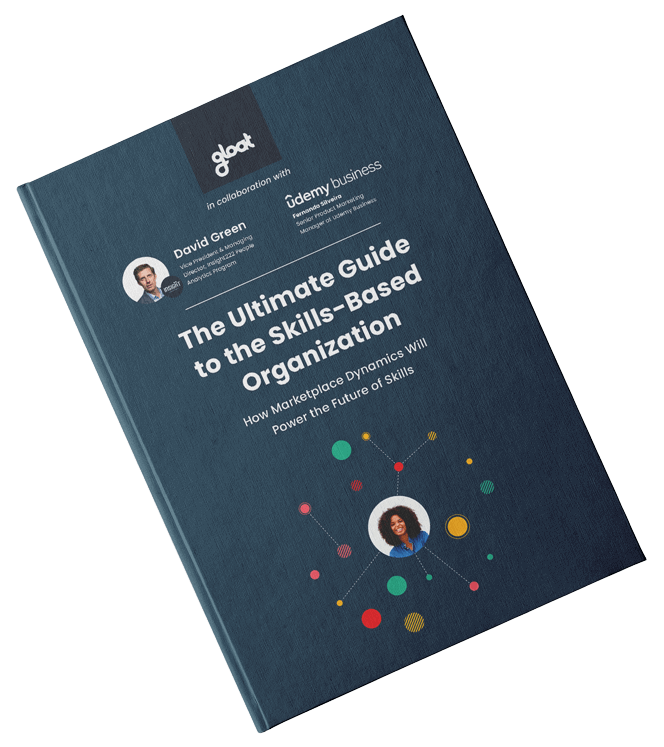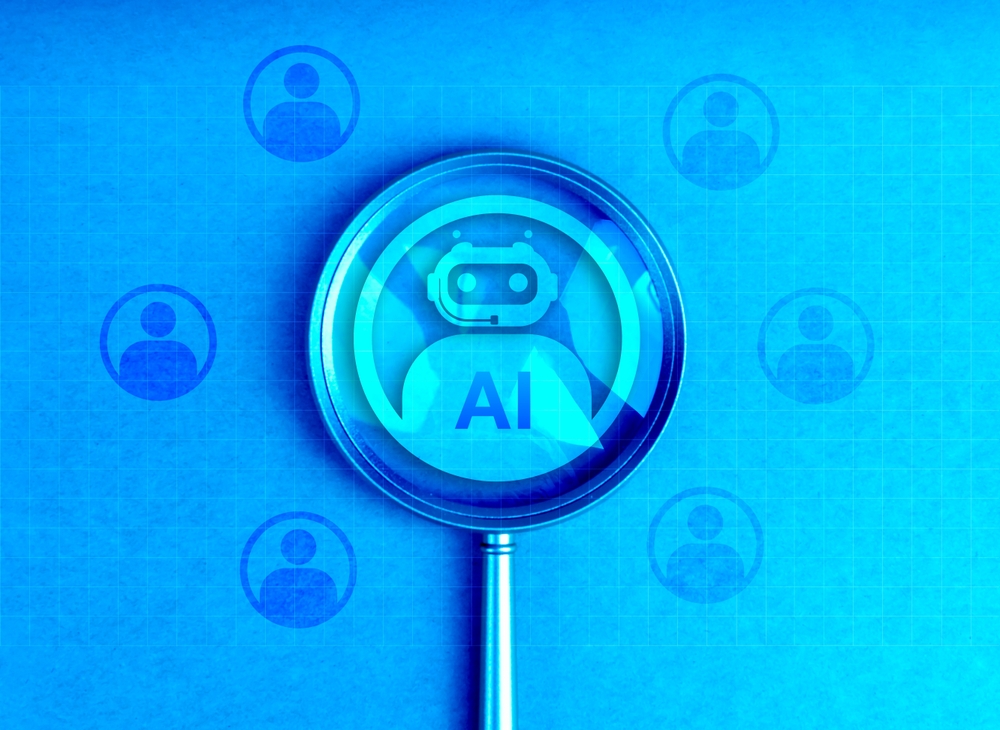Why your organization needs a skills ontology framework
Now that 45% of CEOs fear their companies won’t be economically viable within the next decade, transformation is undoubtedly a business imperative. Yet, many executives are running into the same challenge as they embark on their transformation journeys: uncertainty about the skills their workforce currently has and the knowledge they need to acquire. Rather than

Now that 45% of CEOs fear their companies won’t be economically viable within the next decade, transformation is undoubtedly a business imperative. Yet, many executives are running into the same challenge as they embark on their transformation journeys: uncertainty about the skills their workforce currently has and the knowledge they need to acquire.
Rather than looking for a quick fix to drive organizational change, the most impactful transformation initiatives start from within a company. They’re rooted in an understanding of the business’s shifting skill needs and the ability to identify how talent can be redeployed to meet emerging challenges.
Since both in-demand competencies and internal talent pools are ever-changing, leaders can’t rely on familiar mindsets and static technologies to push their transformation agendas forward. Instead, they must harness a new generation of AI-powered tools that can adapt to shifting skills needs in real-time—which is where skills ontology frameworks come into play.
What is a skills ontology?
A skills ontology is a structured framework that categorizes and defines relationships between skills across roles and industries. It helps organizations map employee capabilities, identify skill gaps, and align talent with business needs. Skills ontologies power AI-driven tools for workforce planning, learning, and internal mobility.
For example, an ontology might specify that the skill of “Programming” is a subcategory of “Computer Science” and that it has the property of being applicable to the creation of software.
This framework allows companies to identify how skills are organized across their business, where skills sit today, and the skills that are required for any project or role within their organization. Skills ontologies also provide clarity around what skills exist within the organization and possible skill gaps that need to be addressed.
How do skills ontologies work?
With the latest AI-driven technological innovations, building a skills ontology is easier than it has ever been. Many companies are harnessing skills infrastructure technology, such as Gloat’s Skills Foundation, to map millions of skills based on both public and proprietary data on jobs, resumes, performance reviews, and job descriptions to understand and infer skills for an existing workforce.
The best ontologies are made up of multiple layers of market, internal, and talent marketplace data, which constantly evolve as more employees use the platform to find projects and opportunities.
As more job and skill data is added, the ontology should connect and harmonize these data sources to create a richer and more personalized view of workforce capabilities and how they relate to one another. Companies can then harness this skills ontology framework to prioritize critical skills, update job design, efficiently deploy talent, and match employees to projects and roles based on their capabilities and expertise.
What are the differences between skills ontologies and skills taxonomies?
While the terms “skills ontology” and “skill taxonomy” might sound similar, the table explains why these phrases cannot be used interchangeably.
Differences Between Skills Ontologies and Skills Taxonomies
|
Skills Ontologies |
Skills Taxonomies |
|
More formal and detailed skills representation |
A simple list of capabilities organized into a hierarchy |
|
Designed to be more comprehensive and inclusive |
May only feature a limited set of capabilities relevant to a certain domain |
|
Self-evolving, so they adapt as your workforce learns new skills |
Static, meaning the taxonomy can quickly become outdated |
One of the key differences is that an ontology is a more formal and detailed way of representing skills. While a taxonomy simply lists and organizes skills in a hierarchy, an ontology specifies the relationship between skills and the properties that they possess.
Another difference is that a skills ontology is typically designed to be more comprehensive and inclusive than a taxonomy. While a taxonomy may only feature a limited set of capabilities that are relevant to a particular domain, an ontology is designed to cover the full breadth of skills related to this function. This allows an ontology to be more flexible and adaptable to different situations and creates a more complete picture of all of the capabilities an individual or organization possesses. Thanks to recent AI innovations, many ontologies are now dynamic and updated continuously as relationships between skills and jobs change.
Unlike taxonomies, ontologies are often self-evolving, meaning they can adapt with your workforce as your people learn new skills. Ontologies help us showcase the strength of the relationship between skills as they change, and the addition of new skills as they arise. In contrast, taxonomies are more rigid and generally don’t evolve.
5 benefits of using a skills ontology framework
As companies strive to transform into skills-based organizations, skill ontologies equip them with a few decisive advantages, including:
#1. Improve talent management
When leaders have a complete picture of the skills their workforce has and how capabilities relate to each other, they’ll be equipped with the insights needed to make strategic talent management decisions. From determining which employees are ready for a promotion to pinpointing the expertise workers should focus on building, skills ontologies are the secret to leveling up talent management processes.
#2. Improve talent acquisition decisions
Skills ontologies give leaders clearer insights into the types of skills they already have, and in turn, the capabilities they will either need to hire or upskill and reskill for. Rather than guessing what skills an organization needs to hire for, skills ontologies help executives clearly define the knowledge a candidate must possess in order to be successful in a given role.
#3. Find in-demand skills on-demand
A skills ontology creates an internal database for skills sourcing and identification, which allows managers and leaders to quickly pinpoint and call upon the talent that possesses the specific expertise they’re looking for.
#4. Make data-driven upskilling and reskilling investments
Once leaders gain insight into the skills their people have and the competencies they need to hone, they can begin devising and implementing skill-building initiatives that align with these priorities. Skills ontologies give visibility into emerging trends, or where gaps sit to inform where to invest in development and upskilling and plan for future-fit roles.
#5. Streamline talent redeployments
Sometimes leaders may be unaware that an employee with a certain skill could use the same knowledge and apply it in a slightly different way to complete a project for another department or functional group. Rather than staying in the dark about how employees’ skills can be applied across the organization, a skills ontology sheds light on how skills relate to one another and identifies the adjacencies that might help employees move into new roles.
3 reasons why every organization needs a skills ontology
Given the benefits associated with using a skills ontology, it’s easy to understand why so many organizations are eager to begin taking advantage of them. Here are 3 reasons why they deserve a spot at the top of your priority list:
#1. Understand how skills relate to jobs
Skill ontologies don’t just map out how skills relate to one another; they also show how skills relate to various jobs. Once leaders have an understanding of how different skills and jobs intersect, they can make workforce planning and talent redeployment decisions using the insights their skills ontology provides—in turn, ensuring they’re tapping into all of the capabilities their people have to offer.
#2. Identify transferable skills
By shedding light on how various expertise relates to different roles, skills ontologies can identify employees with transferable skills that will make them strong candidates for open opportunities—even if no one has the exact skill a hiring manager was originally looking for. As a result, skills ontologies enable leaders to broaden their talent pools and tap into qualified internal talent that may have otherwise gone overlooked.
#3. Keep skills insights up to date
The best skills ontologies are self-evolving, which means that the more information you collect about workforce skills and job needs, the more accurate and updated your ontology will become. There’s no need to manually update these frameworks; instead, leaders can feel confident that the depth of their skills information is going to continue to grow with their organization.
How to use a skills ontology to build a skills strategy
Leaders can harness their skills ontology to develop a comprehensive skill-building strategy that equips their entire workforce with in-demand expertise. Here are 4 steps to get started:
#1. Assess current skill levels
An employee who has written a few lines of code doesn’t have the same level of expertise as colleagues in software engineering. Rather than solely indicating which skills employees possess, leaders must go the extra mile to determine their competency levels.
While many businesses once relied on tests to capture employees’ skill levels, visionary organizations are now harnessing skills intelligence tools to gain in-depth insight into their expertise. Employees can upload a resume or LinkedIn profile and the system will infer their skills and proficiency levels. The platform’s algorithm takes into account both years of experience and how long ago employees executed a specific skill to accurately assess their capabilities.
#2. Align skills with organizational goals
Once leaders have a clear understanding of the skills their people have and their proficiency levels, it’s time to see how this expertise compares to the capabilities the organization needs to accomplish its key business objectives. Executives must take stock of the deliverables they’re responsible for, the skills that will enable their project goals to turn into realities, and any existing knowledge gaps that stand in the way of accomplishing their business objectives.
#3. Develop and implement skill-building programs
Armed with clear insights into existing skill shortages, it’s up to leaders to develop new initiatives that will help their people hone the competencies their organizations need. The most effective skill-building strategies will include both content-based L&D courses as well as experiential learning opportunities that give employees a chance to put the lessons they’re learning into practice.
To ensure all workers have access to hands-on learning opportunities, many companies are turning to talent marketplaces. The platforms generate suggestions for projects, gigs, and full-time roles based on an employee’s skills and career goals.
#4. Identify meaningful mentorship pairings
Mentoring is a popular way to expand employees’ skill sets while also promoting cross-functional collaboration. However, these initiatives will only be impactful if workers are paired with mentors who are experts in the skills they’re looking to build.
Rather than limiting mentee-mentor pairing to colleagues within the same department or function, businesses are harnessing talent marketplaces to ensure their mentoring programs are rooted in skills. The platform generates suggestions for mentors who possess the skills employees wish to hone, in turn encouraging coworkers from different areas of your business to come together to expand their capabilities.
To learn more about the role skills ontologies will play in the future of work, check out our guide to becoming a skills-based organization.





